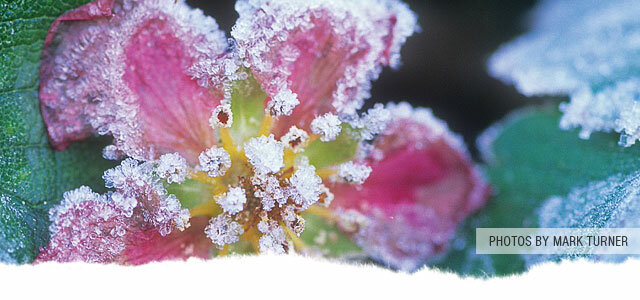 |
| Frost Flowers Magic happens on the forest floorStory by Sue Madsen Take a walk on a cold winter day in the Pacific Northwest lowlands and you are likely to see a phenomenon considered rare in other locales – frost flowers. In essence, dead sticks and branches on the forest floor that are three to eight inches in diameter take approximately 1,000 hours to dry out and come into equilibrium with the surrounding air. I speculated that the frost formations I saw were simply a visible representation of that phenomenon. The atmospheric moisture content (think relative humidity) in our area tends to be quite high, and as a result, dead sticks and twigs in equilibrium with the atmosphere have a fairly high moisture content. When the weather turns cold and dry, the moisture content of the air drops below that of the sticks, and moisture is drawn out of the wood and into the air. Wood being porous, the water exits tiny individual pores and freezes on contact with the air, eventually developing into long strands of ice that have been “exhaled” from individual pores. Like magic, frost flowers are born. A search of the web generally confirmed my hypothesis, as well as teaching me more about frost. Check out CalTech’s online guide to snowflakes and snow crystals at snowcrystals.com And look for frost feathers on your next winter hike – great places to see them locally are the Stimpson Reserve near Sudden Valley or forested trails in the Chuckanut and Larrabee State Park area. X
|